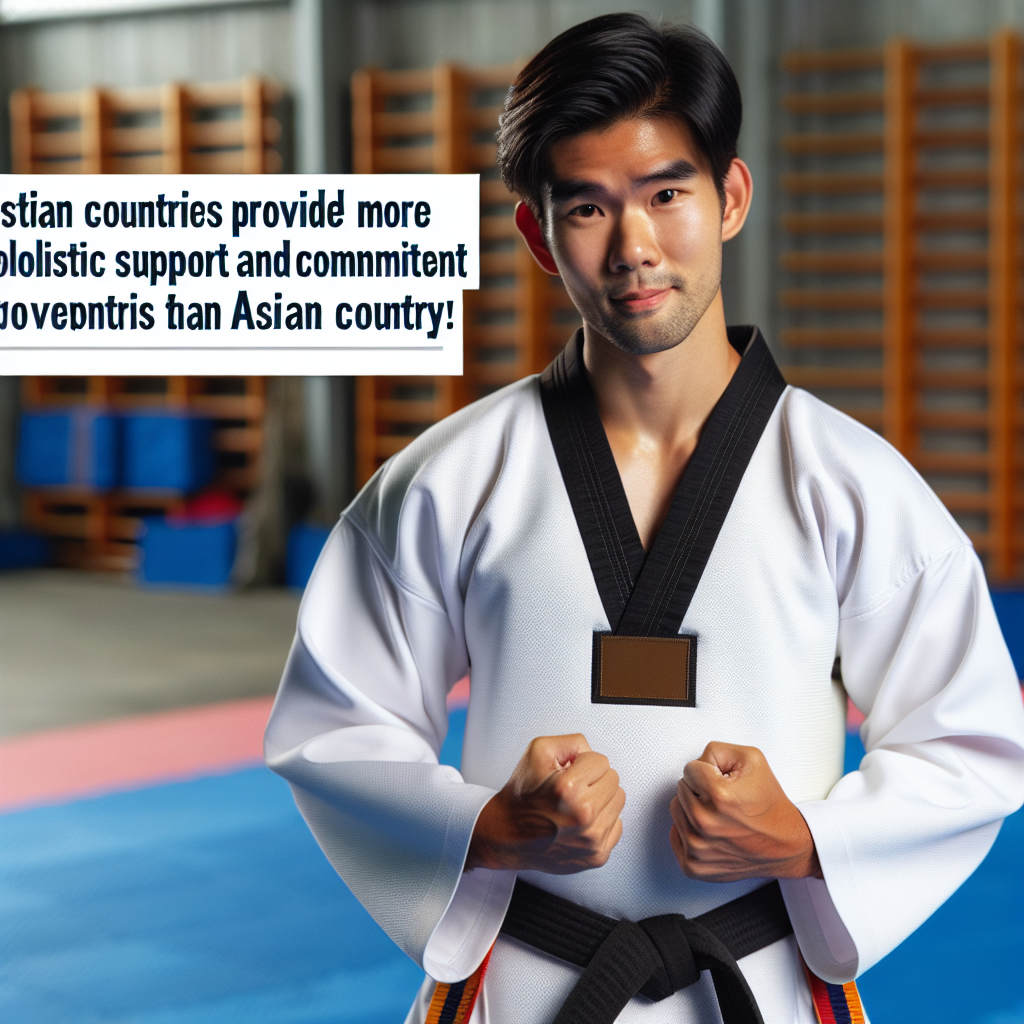American Taekwondo “Poomsae” senior athlete and gold medalist representing the United States national team, Justin Wang, recently shared insights on the differences in sports development between the United States and Asian countries. Wang noted that compared to the comprehensive support and full-time training system for sports in Asian countries, American athletes mostly rely on their individual passion and perseverance. While he used to admire the “comprehensive” care provided by Asian countries when he was younger, as he grew older, he believes that both systems have their own strengths and weaknesses; the sports system in the United States can prolong athletes’ careers.
In countries like mainland China, South Korea, Vietnam, Thailand, and Taiwan, resources and development systems for sports like Taekwondo are generally more substantial. Athletes in these regions often undergo intensive training from a young age, entering school or the national system as part of the national team’s cultivation. In contrast to full-time national athletes in Asia, most American athletes have part-time jobs, training after work, highlighting the cultural and social differences between the United States and Asian countries.
Many might assume that wearing a uniform with “USA” printed on it for international competitions means that the government provides ample support. However, Wang mentioned that the reality of competing in the international Taekwondo “Poomsae” competition in the United States is quite different: “Many times, we train at our own expense, travel at our own expense, and even have to take unpaid leave.”
Wang emphasized that while the United States excels in certain sports, in relatively obscure events like Taekwondo Poomsae, the allocation of national resources appears limited. Hence the emergence of a unique model where athletes work part-time: juggling work or school during the day and training after hours.
“We rely on passion, dreams, and support from each other.” This “balancing work with representing the national team” model reflects the emphasis on individual effort and self-management in American sports culture. Wang stated that compared to some Asian athletes, American athletes often follow a commercialized, self-managed model without a comprehensive national training system. Many members of American national teams rely on their own efforts rather than entering sports schools at a young age and progressing with state-funded training and competitions.
Using his own experience as an example, Wang explained, “I have to find my own coach, venue, schedule, and even raise funds for travel expenses, take leave to compete, all based on a foundation of ‘truly loving it.'” This pure love for the sport drives American athletes to overcome various obstacles.
Observing the Asian athletes, Wang noted that they typically grow up within the system, receiving resources and support from the country, with high-intensity training and clear performance requirements. He believes that this system has obvious advantages as athletes can fully dedicate themselves to training without worrying about daily life.
However, this intense training environment also holds shadows, as athletes from a young age have only one goal: strive for athletic achievements. Consequently, many Asian athletes face immense pressure; poor performance not only leads to elimination but also disrupts their lives. The short-lived athletic careers of Asian athletes pose a daunting challenge in transitioning after retirement.
Wang believes that compared to American athletes who need to actively seek resources and rely on passion to sustain training, the path for Asian athletes resembles a more institutionalized track: “If you run fast, you get to compete; once you slow down, you have to step back.” This high-pressure competitive environment swiftly identifies top athletes in the country but also brings higher uncertainties. Injured or retired athletes in Asia often lack alternative livelihood skills; apart from a few elite athletes, many end up with broken dreams or wings clipped midway.
Wang observed that Asian athletes focus more on details and discipline in training, resulting in more precise and consistent technical execution. This is closely tied to the Asian cultural values of “precision” and “collective harmony.”
Conversely, American athletes tend to exhibit more “creativity” and personal style. Wang believes, “This stems from cultural differences and sports systems but also makes competitions more interesting.” However, the personal style of American athletes may not always align with the team performance or the consistency in fundamental skills compared to Asian teams.
For instance, in the World Poomsae Championships, Asian countries consistently excel every year, while the United States, although strong, has yet to achieve the status of a comprehensive powerhouse. Nevertheless, Wang believes that it does not mean the United States is lagging behind, as it is a process of competition, and the US is beginning to focus on cultivating young Taekwondo “Poomsae” athletes, showcasing great potential for the future.
Wang thinks that whether it’s Asian athletes sprinting full-force under the “national system” or American athletes freely navigating through passion and perseverance, each athlete interprets their love for sports through practical actions, exerting effort and sweat under different systems. ◇

